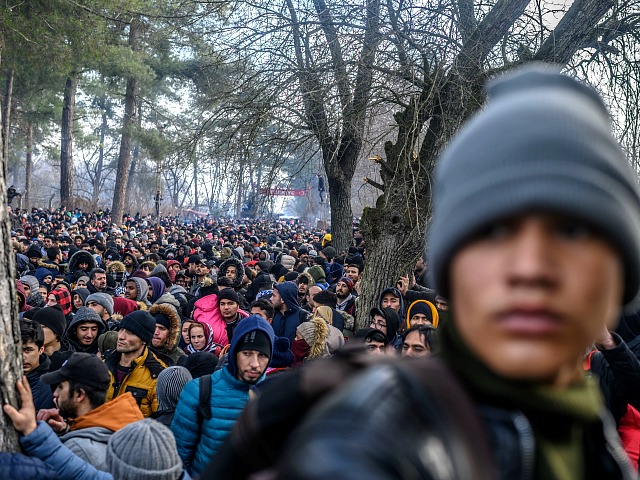Many millions of poor migrants will travel to the United States amid a global climate crisis, and the United States will quickly benefit by rejuvenating an “aging workforce,” says the New York Times.
“As their land fails them, hundreds of millions of people from Central America to Sudan to the Mekong Delta will be forced to choose between flight or death. The result will almost certainly be the greatest wave of global migration the world has seen,” the newspaper declared in a graphic feature, titled “THE GREAT CLIMATE MIGRATION.”
The article comes as Joe Biden is offering to expand immigration from poor countries.
The New York Times article says:
People are already beginning to flee. In Southeast Asia, where increasingly unpredictable monsoon rainfall and drought have made farming more difficult, the World Bank points to more than eight million people who have moved toward the Middle East, Europe and North America. In the African Sahel, millions of rural people have been streaming toward the coasts and the cities amid drought and widespread crop failures. Should the flight away from hot climates reach the scale that current research suggests is likely, it will amount to a vast remapping of the world’s populations.
The vast migration will be good for the United States and Europe, says the newspaper, whose editorial board has repeatedly complained about President Donald Trump’s asylum reforms and his border wall.
Migration can bring great opportunity not just to migrants but also to the places they go. As the United States and other parts of the global North face a demographic decline, for instance, an injection of new people into an aging work force could be to everyone’s benefit.
But the claimed benefits can be gained only if the migrants are quickly accepted into each country, says the newspaper:
But securing these benefits starts with a choice: Northern nations can relieve pressures on the fastest-warming countries by allowing more migrants to move north across their borders, or they can seal themselves off, trapping hundreds of millions of people in places that are increasingly unlivable. The best outcome requires not only good will and the careful management of turbulent political forces; without preparation and planning, the sweeping scale of change could prove wildly destabilizing. The United Nations and others warn that in the worst case, the governments of the nations most affected by climate change could topple as whole regions devolve into war.
Americans should not fight this mass movement; the paper warns:
The stark policy choices are already becoming apparent. As refugees stream out of the Middle East and North Africa into Europe and from Central America into the United States, an anti-immigrant backlash has propelled nationalist governments into power around the world. The alternative, driven by a better understanding of how and when people will move, is governments that are actively preparing, both materially and politically, for the greater changes to come.
In 2019, Trump mostly blocked the early stage of this growing blue-collar migration by reforming the border rules, making deals with Mexico and Central American countries, and by building the border wall.
The article does not discuss the role of international trade, which has massively expanded income throughout the developing world — and which is expected to grow wealth in Mexico and Central America as international investment moves out of China.
The massive growth in wealth also funds technology that allows people to deal with changes, such as glasshouses that allow people to grow food with far less water.
The article also sidelines the impact of birth control for reducing the population pressure in Africa and elsewhere.
The article argues that immigration is a benefit to the target countries, such as the United States.
But the economic data suggest that immigration generally benefits wealthy people who gain from the extra workers, renters, consumers, and political complexity. The data also shows that the inflow reduces workers’ incomes, sidelines young Americans, spikes housing costs, inflates government spending, and adds more diversity onto Americans’ fractured society.
The New York Times article ends up arguing that the only fix is global climate control — or society-changing acceptance of missive migration: “The next choice — how to respond and prepare for the migrants — ultimately falls to America’s elected leaders.”

COMMENTS
Please let us know if you're having issues with commenting.